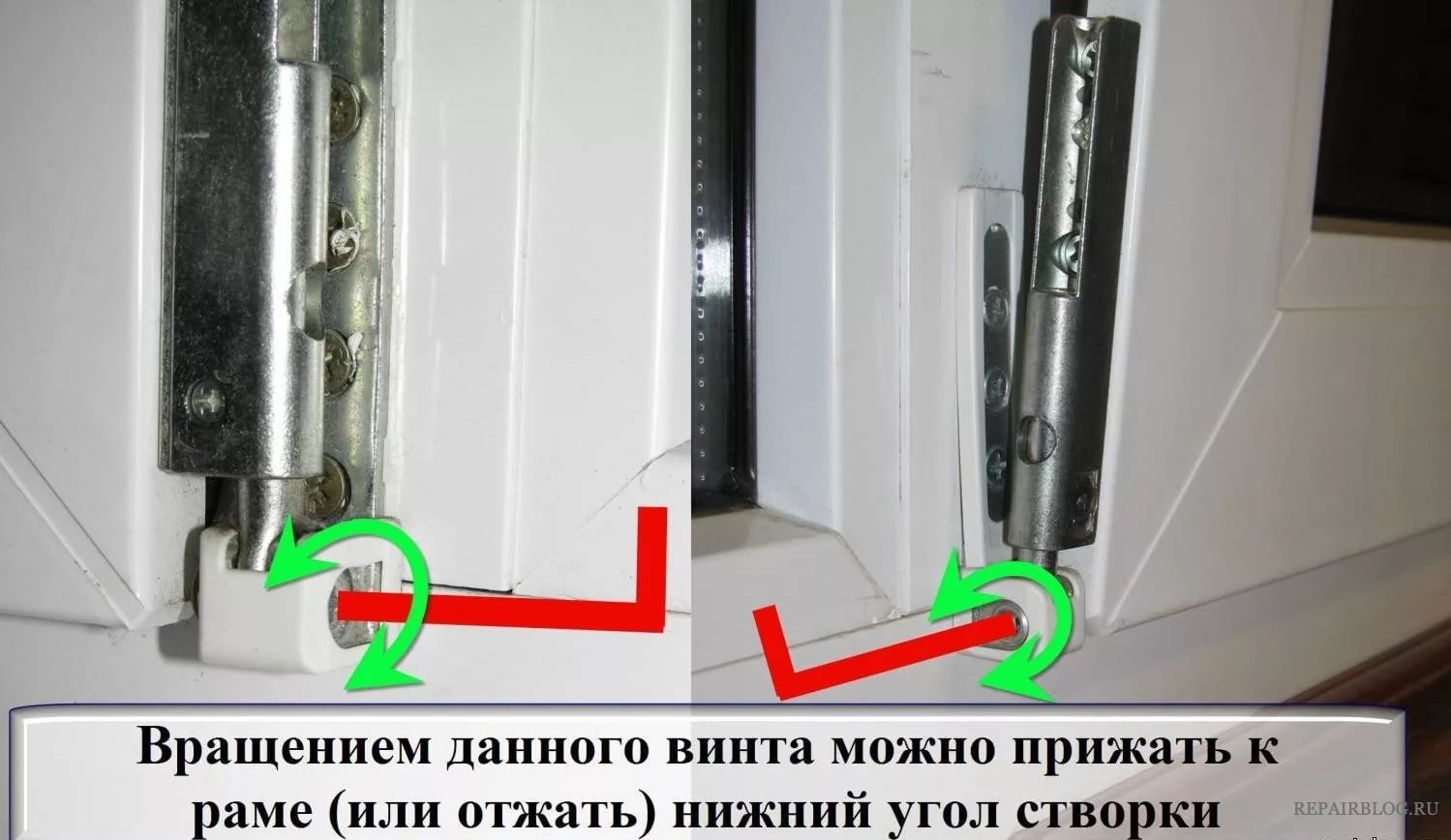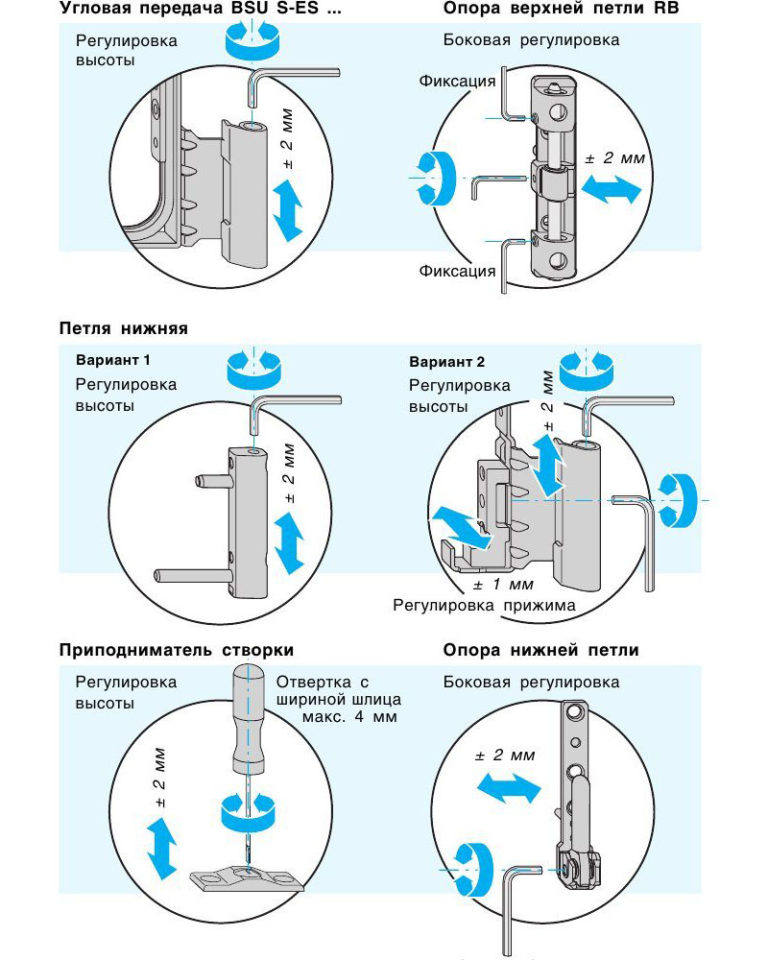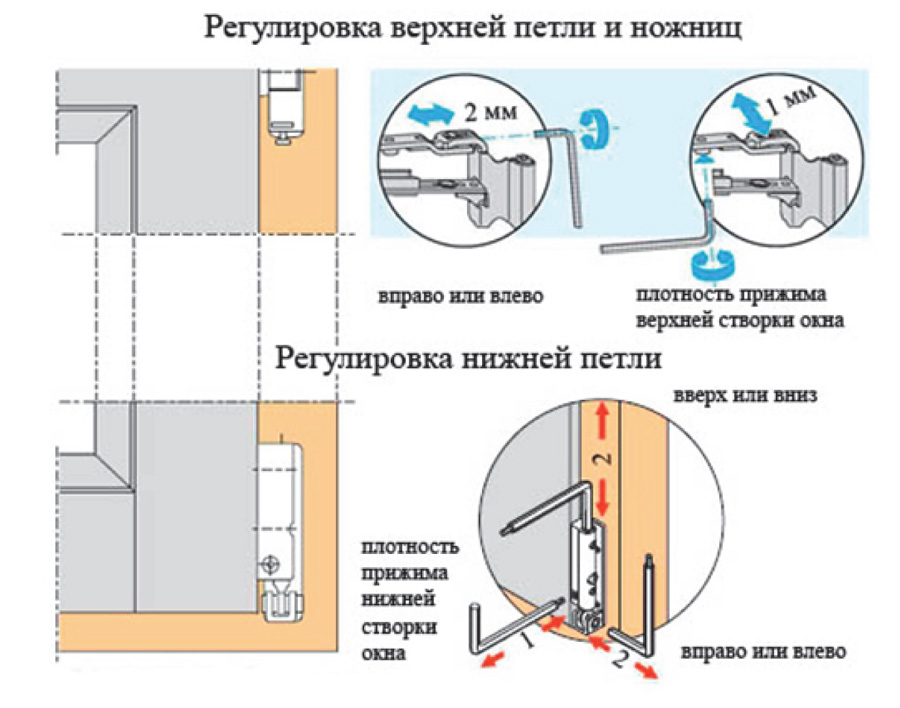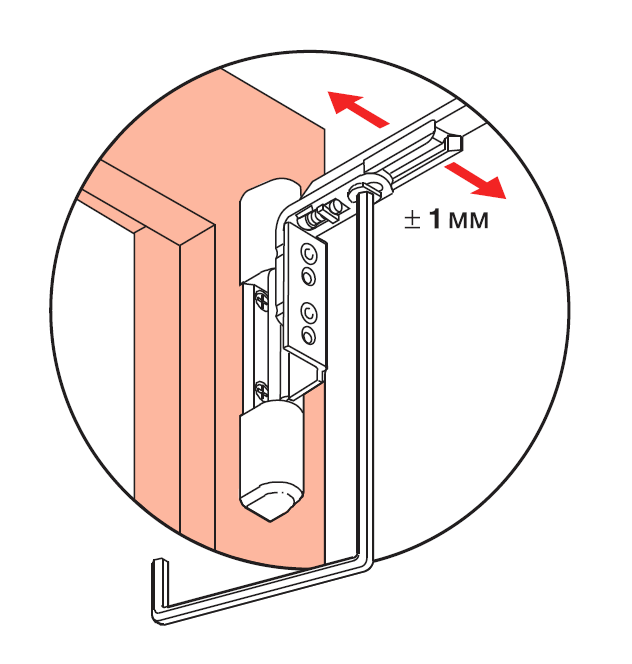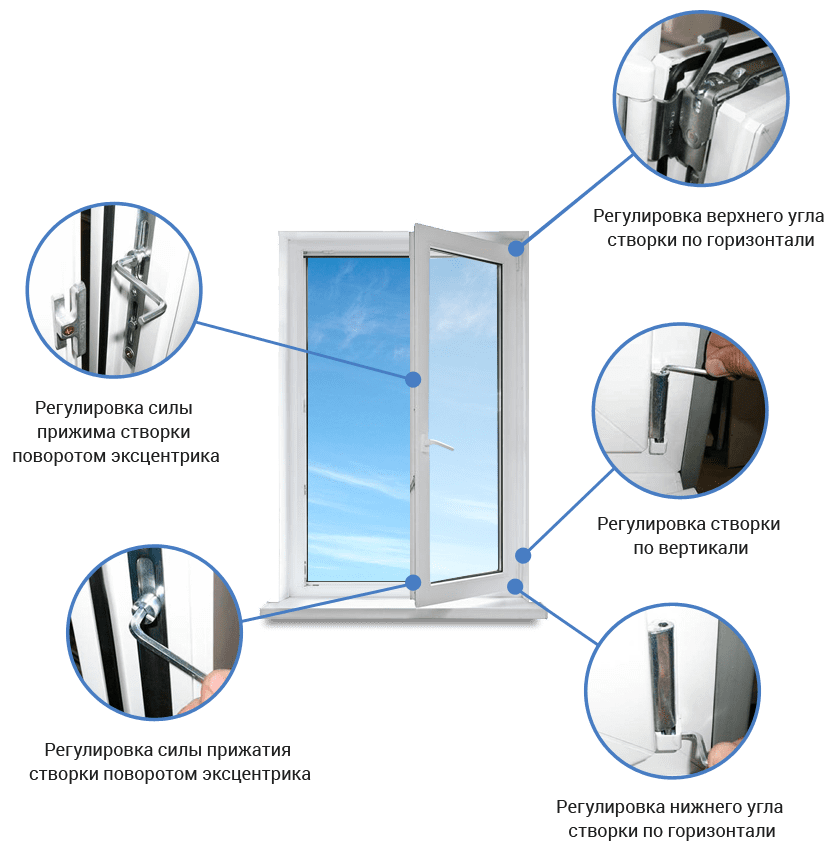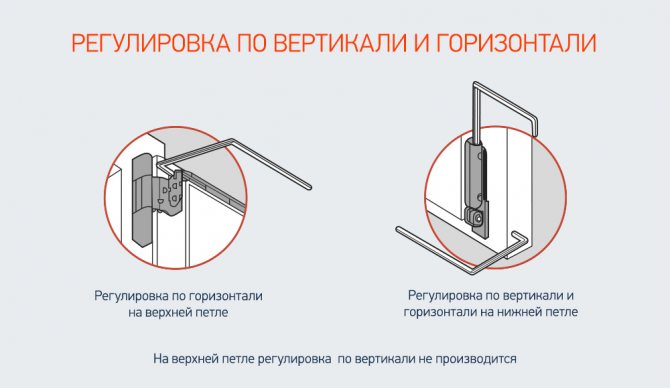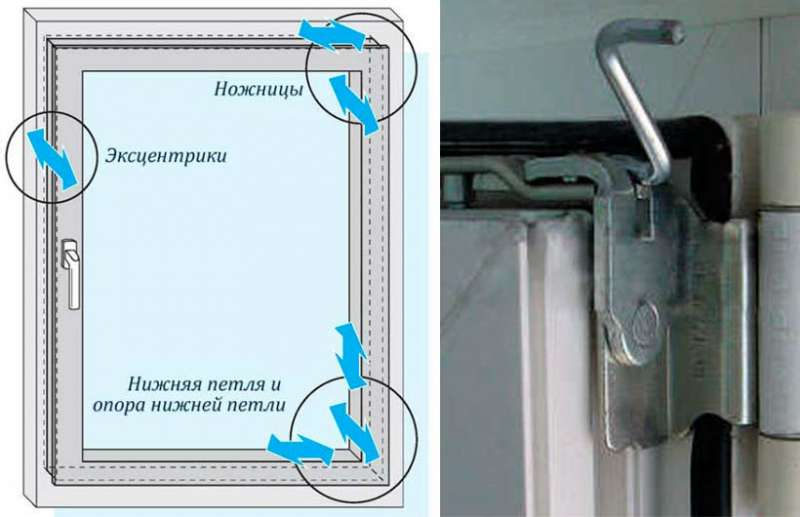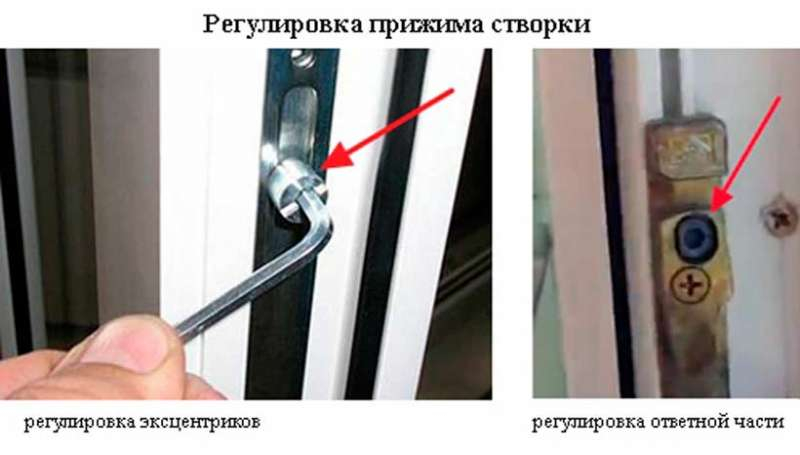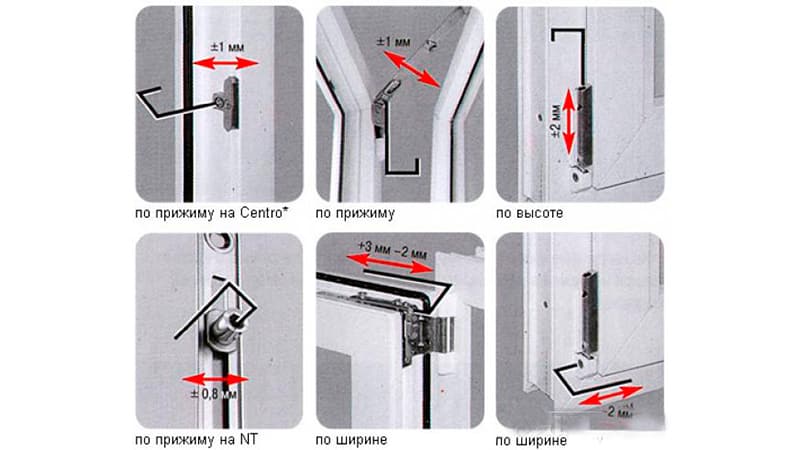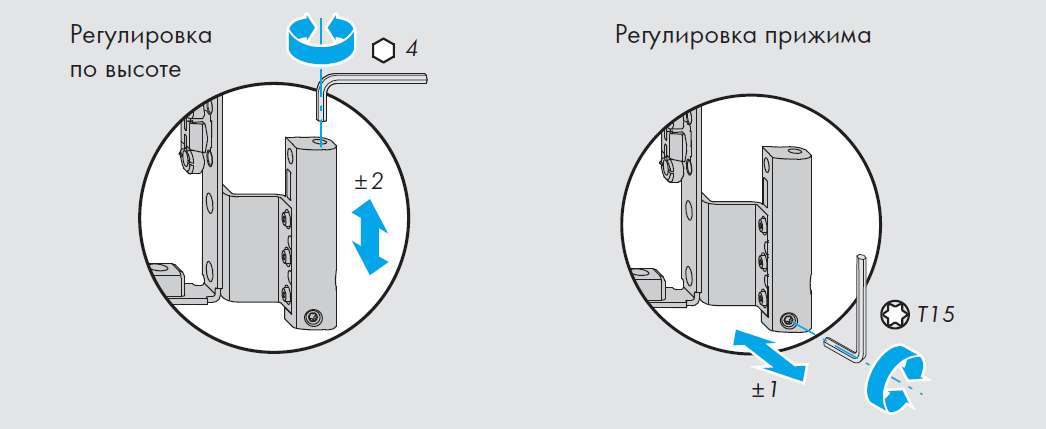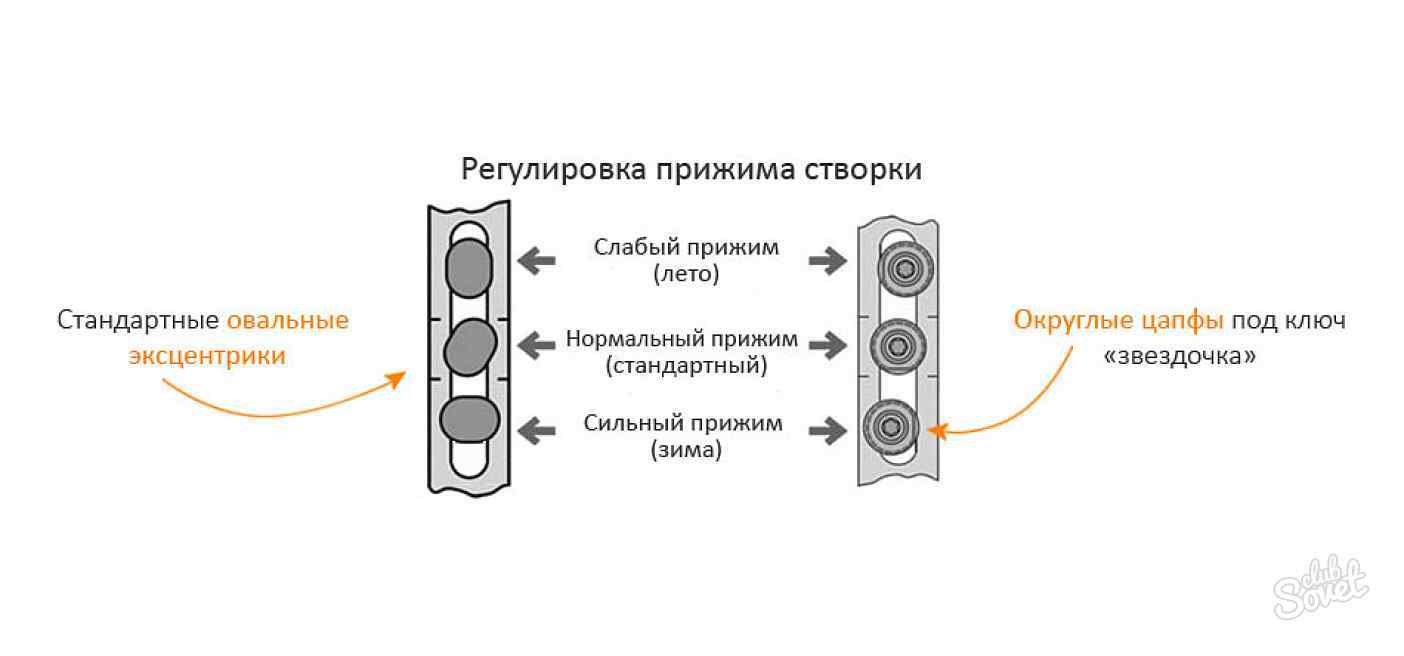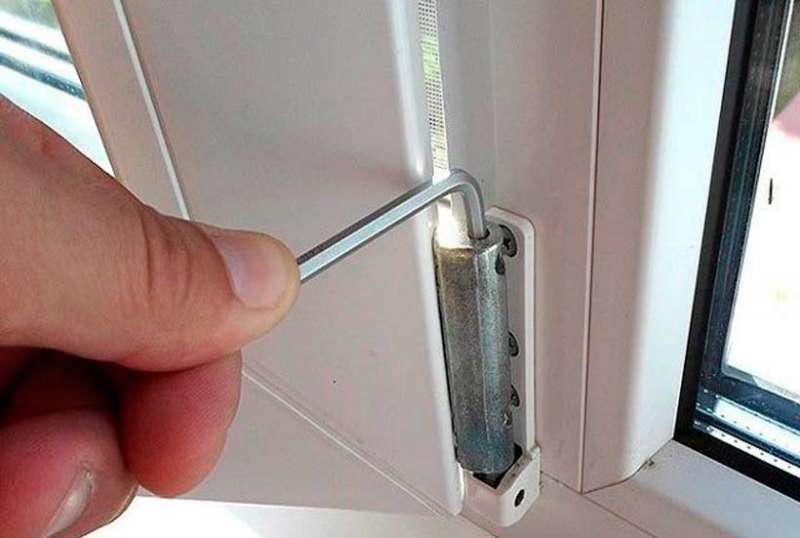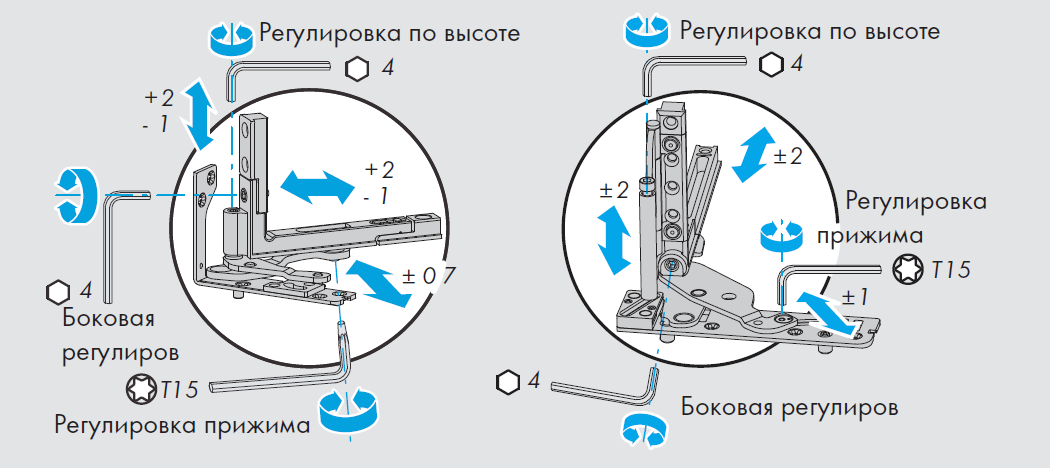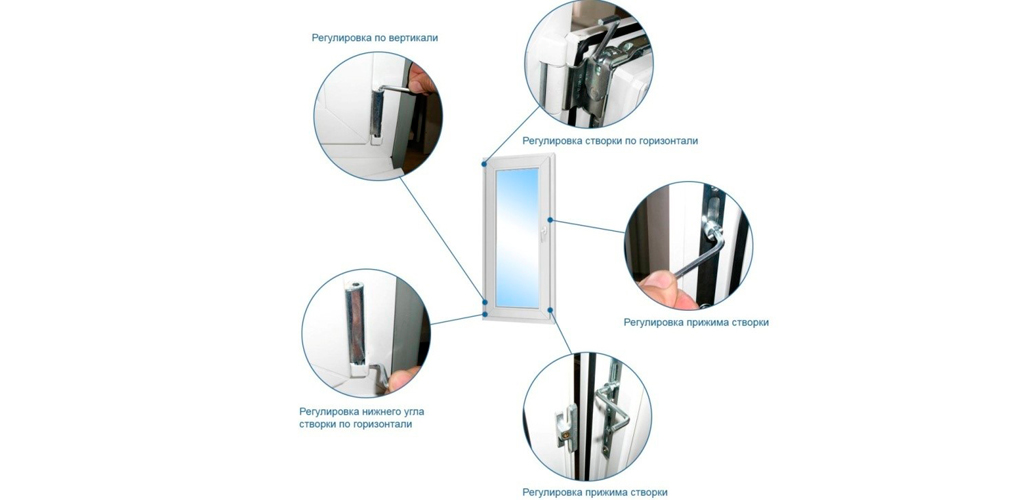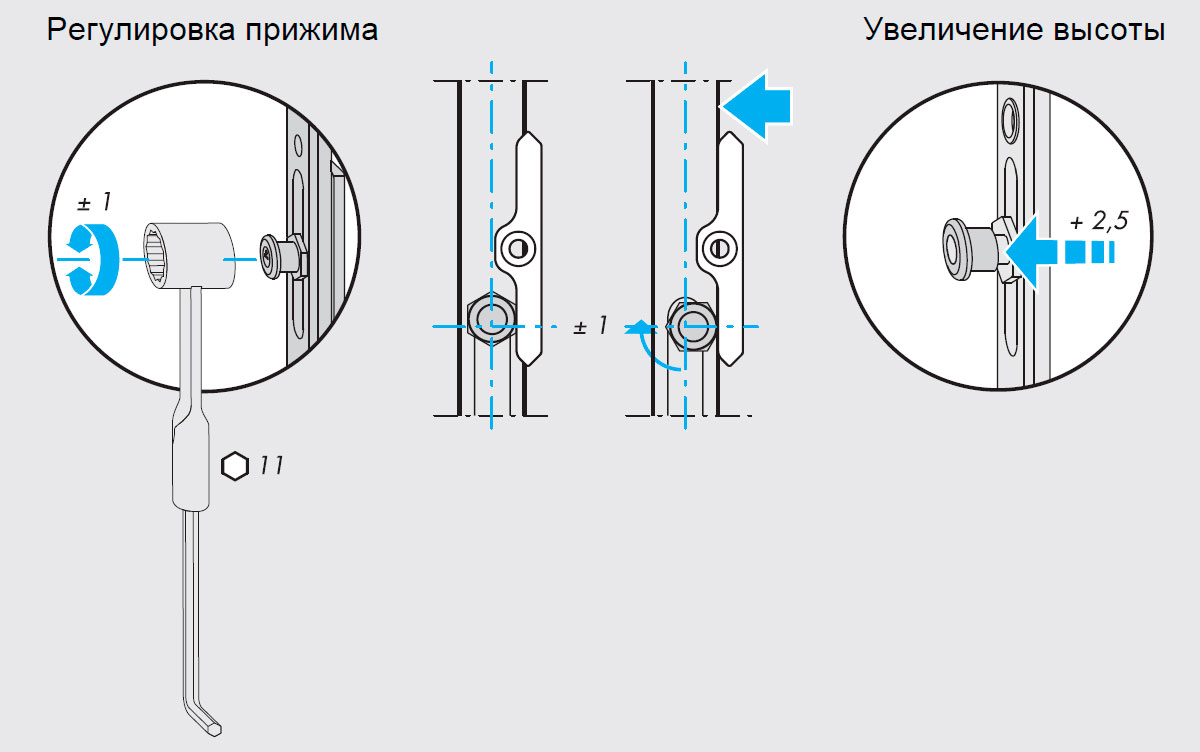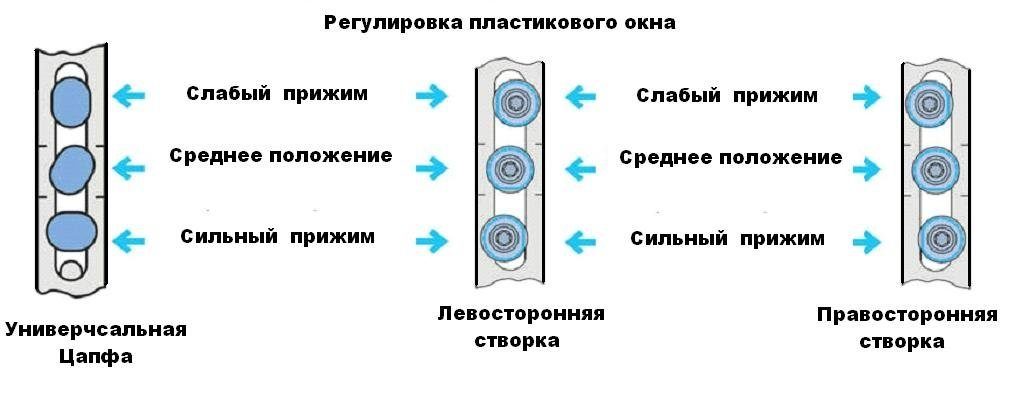General features of the adjustment of PVC windows
How to properly regulate plastic windows and how to do it yourself? It must be remembered that there are different models of windows. They provide for the presence of different fittings, double-glazed windows and strength. We have tried to summarize all the existing options and deduce the general features that allow you to customize the windows.
Horizontal adjustment
We adjust the lower part of the window horizontally if the sash is sagged
To shift the frame or eliminate a slight skew, it is necessary to use the horizontal adjustment, which is carried out using the lower and upper hinges. The hinges themselves have special holes for a hexagon. The bottom hinge allows adjustment both from the outside and from the inside (respectively, you can adjust the open or closed window). As a result of clockwise rotation of the key, the sash will be tightened with a loop. As a result of this action, the bottom of the window, which is on the opposite side of the hinge, will rise. Correspondingly, when rotating counterclockwise, the bottom of the window will go down.
Horizontal adjustment of plastic windows can be independently carried out in the area of the upper hinge, as a result of which the top of the sash will already be adjusted, but this must be done exclusively with the window open. It should be noted that the shift is carried out within 2 mm.

We carry out horizontal adjustment of the window in its upper part
Vertical adjustment
Vertical adjustment of the plastic window
PVC windows can be vertically calibrated using the lower hinge. To do this, you need to open the plug to provide free access to the hexagon. The sash will begin to rise when the hexagon is turned clockwise, in the opposite direction the sash will begin to lower. As with the horizontal adjustment, the shift range is 2 mm.
Sash pressure adjustment
It is used when blowing from the PVC window is observed. The quality of the clamp can be checked as follows: a lighted match is brought to the closed PVC window and the flame is observed to move. If it deviates to the side, then there is a gap in the window.
In this case, the clamp is adjusted with the help of eccentrics, which are located along the perimeter of the fittings (this method is used to adjust the plastic windows for the winter). As a result of turning the handle, they go beyond the pressure pads. Since the customization is not a big problem, you can also do it yourself.
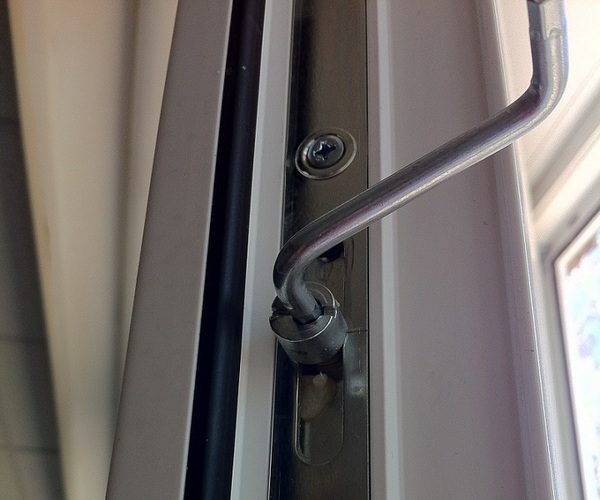
The sash pressure is adjusted using eccentrics (pins)
The sash will be pressed against the frame if the eccentric is moved clockwise. Accordingly, when the eccentric is shifted counterclockwise, the sash will move away from the frame. On the surface of the eccentric there is a small strip, with which you can determine the degree of compression of the sash and frame. The closer this strip is to the seal, the more the sash is pressed.

Adjustment scheme of pins on plastic windows
The adjustment range is within 1-2 mm. A more or less strong clamping of the sash is allowed at different times of the year - in summer you can loosen it, and tighten it more in winter. This is done to ensure the supply of air - more air will pass in the summer, and less in the winter.
Buttonhole adjustment
The flip-up window has two hinges that can be adjusted to improve functionality. The lower hinges are adjusted by means of a screw located horizontally on them.In order to adjust the pressure of the upper hinges, you need to open the PVC window for ventilation (turn the handle so that only the upper part of the window opens). In this case, you need to hold the window with your hand, since it will only hold on to one, lower loop. The hinge adjustment helps determine how much the hinged window is pressed. The allowable range is within 2.5 mm. As the distance increases, the window will be less adjacent to the hinges and more air will be provided. As the distance decreases, the window will adhere more tightly to the hinges and provide reliable protection from the air entering from the outside.
How to adjust the top loop yourself
To eliminate the problem associated with incorrect opening of the transom or its poor fit, the sash in the area of the upper hinge is pressed and opened.
Blowing from the side of the hinges is encountered when there is a violation of the installation of the window frame. To adjust this problem, the glazing bead is removed from the sash and several straightening plates are placed in the middle between the profile and the glass. To do this, lean a wide chisel at the junction of the transom profile and glazing bead and disconnect the glazing bead with a slight blow.
At home, straightening plates are made from an ordinary wooden ruler. When using them, you must try not to damage the glass unit.
Do-it-yourself PVC window adjustment. Various options
To begin with, it is advisable to consider in detail the method of adjusting the window. So, if it is necessary to change the location of the sash (for free opening), then it is advisable to perform a number of sequential procedures:
In a situation where it is required to strengthen the degree of adherence of the sash to the base of the frame, proceed as follows. First, for these purposes, a system of eccentrics is used, which are located at the end of the sash from the side of the handle.
For this, the eccentrics with the help of pliers or a hexagon must be rearranged to the appropriate position.
In some window models, the designs of the eccentrics are made in such a way that in order to adjust them, it is enough just to pull the eccentric towards you, then make the necessary crank, and only after that release the eccentric (it will be pressed by the spring).
In general, experts recommend performing a similar procedure for adjusting the eccentrics twice a year (off-season), increasing or decreasing the degree of pressing.
However, this method can be used to adjust the pressure of the window from the side of the handle. When the user needs to strengthen the pressing of the sash from the side of the canopies, they do it in a different way.
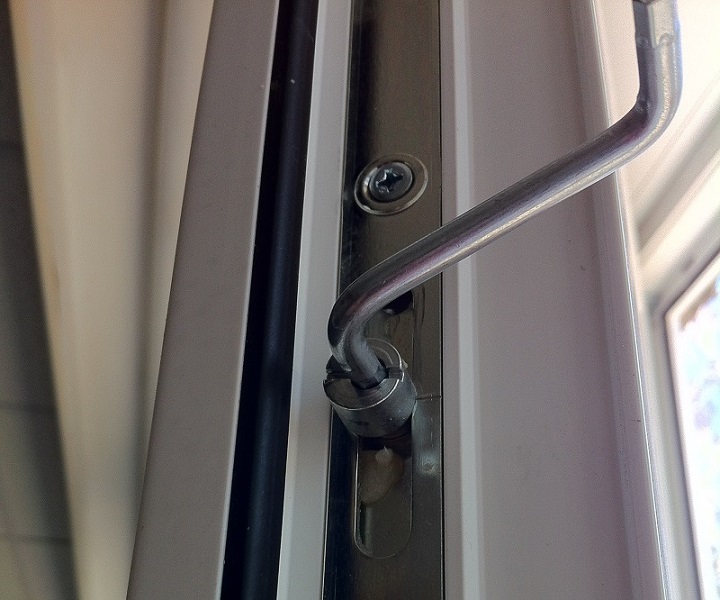
So, if it is necessary to ensure a stronger pressing of the sash (from the side of the canopies) of the pivot-type window structure, then use the adjusting screw on the lower hinge. When it is required to carry out a similar procedure for the swing-out structure, it will be necessary to perform additional adjustment of the window sash clamping due to the upper hinge. For this, the procedures should be performed in the following sequence:
Certain types of window fittings are adjusted using special answers (usually located on the window frame on the side of the handle) which can be adjusted using hex keys.
So, for a stronger clamping of the window sash to the base of the frame, it will be necessary to shift the counterpart outward (towards the street). And also use the clamping mechanisms located on the frame from the side of the awnings. Their adjustment is carried out with a hexagon, while a stronger clamping of the sash to the frame will be provided when the mechanism tongue is pulled out more strongly.
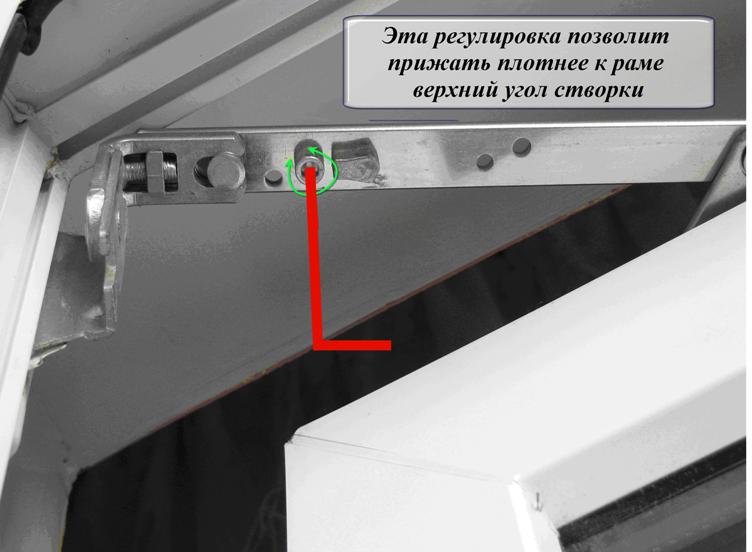
A fairly common defect in a metal-plastic window is considered to be tight rotation of the handle.
This is often caused by the fact that the fittings do not have sufficient lubrication. In this case, the repair of the window is reduced to the banal lubrication of the locking mechanism and all rubbing elements with machine oil or aerosol lubricant (for example, WD-40). The adjustment of the doors of the balcony blocks is provided in a similar way.
In a situation where it is necessary to completely replace the handle, pull the decorative cover on the handle with your fingers and then turn it 90 º (in order to free access to the screws). By unscrewing the fastening screws, the handle can be easily removed. And the procedure for attaching a new handle must be performed in reverse order.

Modes
Modern manufacturers offer PVC windows with two sash opening modes: opening and ventilation. The opening angle of the flap can also be adjusted with integrated limiters. A common problem with windows with several modes is the simultaneous opening of the sash and opening the micro-ventilation mode.
It can occur when the open sash is switched to ventilation mode by turning the handle up. In this case, the sash is fixed only on one lower hinge, and the upper part sags and falls under its own weight.

This problem must be solved as soon as possible, otherwise the lower loop may not withstand the load and break. To do this, you need to press on the upper part of the sash and try to firmly press the window against the frame. In this case, the knob must be turned up to the ventilation mode. Then, after the sash is completely closed in the frame, the handle is lowered to the swinging mode. If necessary, you can independently adjust the bollard on the sash. After that, the window is closed.
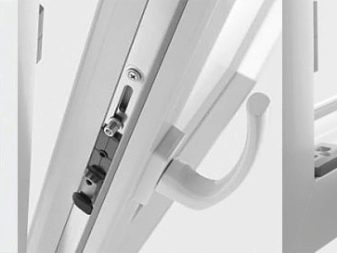

But also manufacturers of plastic windows offer sliding designs. Such doors are best suited for installation on a balcony. The main advantage of sliding windows is space saving, the windows do not open by turning, but by displacement parallel to the frame. In this case, the area of the window sill can be used more efficiently.
Such windows do not require any special care and will last as much as their classic counterparts, from 10 years. They keep the room warm and prevent street noise from entering the apartment. Another plus of these designs is the ability to move the mosquito net, like the frames themselves: the net can move parallel to the frame to the right and left.


Tools and materials
For adjustment and preventive maintenance of plastic products, a few simple tools are enough:
- Allen key with a diameter of 4 mm. This tool is central to the process of setting up the correct operation of plastic windows. It can be purchased at a furniture store at a fairly low price.
- A set of Phillips screwdrivers or a screwdriver with attachments of this type is necessary to perform work related to the removal of accessories from the plastic base.
- Pliers are needed when working with some types of fittings, the trunnions of which do not have holes for a hexagon.
To prevent wear of the moving parts of the fittings and sealing rubber bands, it is necessary to clean and lubricate them at least twice a year. To perform these operations, the following materials are required:
- Solutions for removing dust and dirt.
- Lubricant: machine oil, special impregnating compound.
- Silicone based emollient for rubber seals.
- Soft cloth, brush or brush, hair dryer with cold blowing function.
Adjusting the handle of the plastic window
Such situations are extremely rare, but the consequences are unpleasant. What are the reasons for the problems?
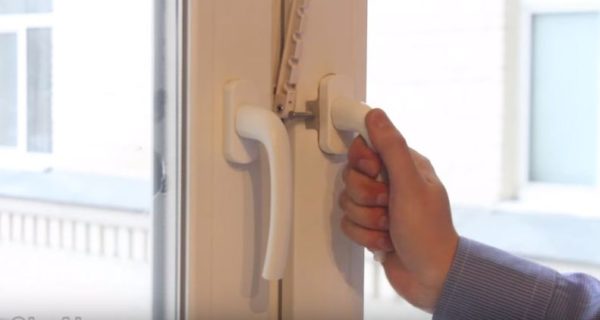 Problems with window handles occur quite often
Problems with window handles occur quite often
- Clogged fittings. Dirt gets into the slots and grooves, children can stuff papers or other small objects there.To restore functionality, you need to clean the grooves.
- Incorrect location of the strikers. They are so displaced that the eccentrics hit the end, the handle cannot take the correct position, the window does not close. The problem is solved by changing the position of the eccentrics vertically or moving the replies. Specific actions depend on the technical features of the fittings.
- Manufacturing defect. Reinforced-plastic windows are assembled at domestic enterprises - even high-quality fittings cannot guarantee proper functioning. The problem appears due to the influence of the human factor, defects are allowed during assembly. If you have such a situation, then you need to contact the manufacturers. A guarantee must be given for each window.
 The handle may not turn due to the displacement of the strikers
The handle may not turn due to the displacement of the strikers
There are times when the fixing screws are loosened. It is easy to fix - you need to turn the decorative caps 90 ° and tighten the hardware as far as it will go.
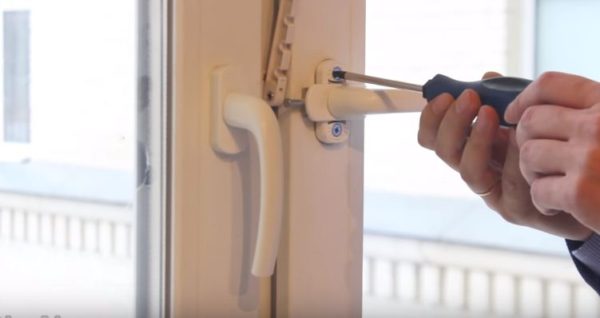 To secure the handle, just tighten the screws
To secure the handle, just tighten the screws
When is adjustment required?
An important point: PVC windows and doors have a similar mechanism (except that the former allow one more degree of opening), therefore, in the future, all instructions will be given using the example of windows. In the case of balcony doors, the work is done identically.
You can understand that urgent and urgent adjustment is required by the following signs:
- the window sash clings to the frame;
- opening-closing is associated with significant effort;
- handles are loose or turn too tight;
- windows allow outside air to pass through even when closed.
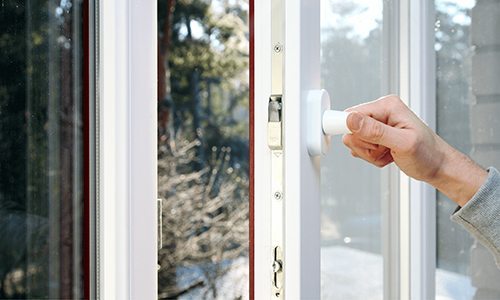 If the window does not open or close well, it means that it is necessary to adjust its mechanisms.
If the window does not open or close well, it means that it is necessary to adjust its mechanisms.
These signs indicate that the window is in an extremely neglected condition, so it is possible that some parts may require serious repair or replacement. In order not to bring the matter to such an outcome, preventive measures can be taken.
You can determine if they are needed as follows:
- Open a door or window slightly. If, in the absence of a draft, the doors close or open on their own, then repair and adjustment is required.
- Circle the entire sash in the closed state along the contour, and then open it. Compare the lines and edges of the window opening. Ideally, they should be parallel. It is recommended to eliminate even the smallest misalignment.
- Take a piece of paper or newspaper. Then close the window so that the sheet is between the sash and the frame. Now, if you can pull it out without effort, then a small adjustment will be required. Ideally, the efforts to remove the paper should be the same wherever the sheet is.
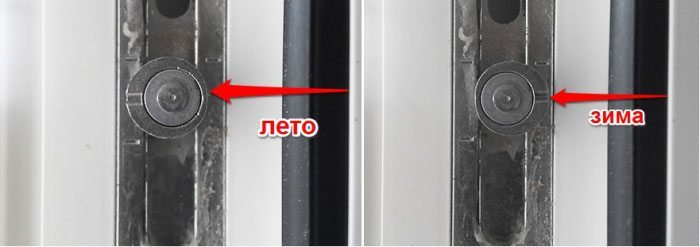 Seasonal adjustment of modes allows you to adjust the operation of window mechanisms in the most optimal way
Seasonal adjustment of modes allows you to adjust the operation of window mechanisms in the most optimal way
Finally, the adjustment of plastic windows is carried out in the off-season: by winter they try to increase the pressure, by the summer - to weaken it. This adjustment helps to avoid rapid wear of individual parts of the closing mechanism.
Video
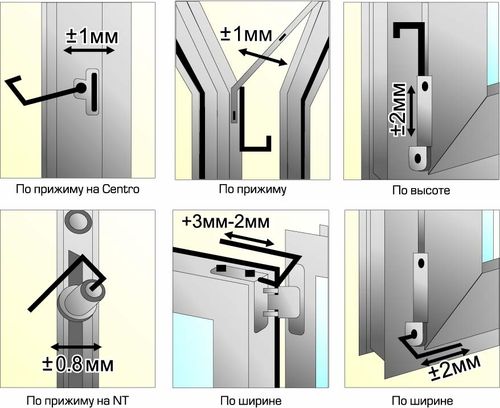
How to adjust a plastic balcony door
Before proceeding with the diagnosis of the problems that have arisen and subsequent repairs, it is worth understanding the structure of the structure.
There is a base unit as well as spare parts for a plastic balcony door. Moreover, among the accessories there are both irreplaceable and optional parts. As a rule, the following elements are included in the door block:
The door block includes a frame, a sash, hinges, a handle, a seal and a glass unit
In addition, the device may include additional elements that expand the functionality of the balcony door: stoppers, mechanical or hydraulic sensors and other parts.
The price of a plastic balcony door is quite high, but buying an expensive high-quality model does not save you from frequent cases of breakdowns of the mechanism.It's all about its frequent use, leading to a decrease in the tightness of the sash.
In addition, the glass unit provides excellent sound insulation and PVC guarantees durability. However, it is these materials that noticeably make the structure heavier, as a result of which it begins to sag under its own weight and ceases to close tightly. As a result, a noticeable draft appears in the room, and the insulation of the balcony does not help.
If everything is so, no intervention in the door mechanism is required.

However, if you notice the slightest deviations, you immediately need to repair the plastic balcony doors. It is not worth pulling with the call of the master, because with each opening and closing the situation will worsen. As a result, this can lead to the balcony doors not closing at all.
If you are adjusting a plastic balcony door with your own hands, it is important to determine the causes of the malfunction for the success of the repair. The most common problems are as follows: To test the door for tightness, slam a regular sheet of paper with the flap.
Try to drag the sheet around the perimeter of the door. If it moves easily, the structure has lost its density and needs to be adjusted.
To test the door for tightness, slam a regular sheet of paper with the flap. Try to drag the sheet around the perimeter of the door. If it moves easily, the structure has lost its density and needs to be adjusted.
Also evaluate the tightness of the gasket pressure: unequal gum pressure, as a rule, indicates sagging
Determining the side of the offset is simple: pay attention to the place where the seal is squeezed and check if there is a trace of the sash on it

Why do you need to regulate
There are several reasons why a person has to independently adjust plastic windows.
Incorrect setup during installation
The main reason for manual adjustment of PVC window products is incorrect adjustment when they are built into the opening. Often, when installing such structures, a pre-developed scheme is used that helps to insert the window correctly. However, some people do not use it, and because of this, windows are often installed incorrectly.
> If mistakes were made during the installation of the structure, the window hinges will not be in the correct position. This leads to the fact that the flaps begin to close worse. Sometimes even manual adjustment of the frame does not help to eliminate the problem, and you have to dismantle the structure in order to then install it correctly in compliance with all the rules for embedding PVC window frames.
Natural wear of the seal
It is no secret that the window opening must be well sealed, especially in winter, when frosts come. Special seals made of durable rubber are responsible for sealing the structure. Also, such rubberized gaskets contain moisture, do not allow dust to enter the room and are responsible for sound insulation. Therefore, all expensive plastic structures are equipped with rubber gaskets.
However, even high-quality seals fail over time. This is facilitated by the following factors:
- improper care of rubber gaskets;
- the use of low-quality rubber in the manufacture of the seal;
- damage to the gasket.
If the seal wears out, you will have to adjust the PVC window products.
Inaccurate and rough closing of the sashes
It is known that plastic windows should be used carefully so as not to damage them. However, some people use them inaccurately and close the flaps roughly.
Such rough handling has a negative effect on the tightness of the closing of the window frames. Most often, this results in slight or severe sagging of the valves.
It is known that all flaps are held on the lower hinge.If the window structure is not equipped with a special blocker, then in the ventilation mode, you can accidentally move the handle incorrectly, and the sash will sag. If such a problem appears, you must immediately adjust the window and install the sash in place. If this is not done, the lower eyelet will come off the fasteners and a new fastening loop will have to be installed.
Shrinkage of the window structure
Some owners of a plastic window over time notice that it has sagged a lot. There are several reasons that lead to shrinkage of the window frame:
- Careless installation of spacer plates. Metal gaskets are installed around the perimeter under the glass unit. If placed incorrectly, the structure can sag under the pressure of the metal plates.
- Shrinkage of the building. A common cause of sagging and damage to installed reinforced-plastic frames. If the shrinkage is insignificant, the windows sag by a few millimeters.
- Large gap between the window opening and the frame. When the window does not fit snugly against the window frame, it begins to shrink.
Wear of parts of the swing-out mechanism
If the window sags, it means that some of the parts related to the rotary mechanism have worn out. So that they do not wear out for a long time, you must adhere to the following recommendations:
- Regular lubrication. All moving parts of the windows must be lubricated periodically. The first lubrication is carried out when an unpleasant creak appears when opening or closing the structure. When lubricating such products, it is better to use special oil formulations used for lubricating sewing machines. It is enough to apply 2-3 drops of oil to the moving parts so that they stop creaking.
- The window mode must be changed. It is impossible for the structure to be in one position for a long time. Therefore, from time to time you will have to alternate the modes of opening the window.
How to adjust the pressure so that it does not blow with your own hands
If it blows from the window, you will have to independently adjust the density of its pressing. Adjustment of the window hold-down is carried out using the lower and upper hinges.
Bottom hinge
Often people have to deal with adjusting the loop located at the bottom of the structure. To set it up, you will have to rotate the horizontal valve. Before adjusting, you will have to get rid of the protective casing, which is installed on the loop. It protects it from debris and moisture.
Upper hinge
Sometimes the window does not adhere well to the surface due to poor screwing of the eyelet at the top. Before starting work, it is necessary to slightly open the plastic window and install it in the ventilation mode, when only the upper part of the structure is opened
Adjust the fastening eyelet carefully. When scrolling the hexagon, hold the window with your hands, since in the ventilation mode it is held only on the lower hinge
How to eliminate the draft from under the sash of a plastic window?
In the event that the window seals are new, and a draft is felt from under the sash, then the most likely reason for this is a loose clamp, for which small movable elements - pins (eccentrics) - are responsible.
They are located in special movable mechanisms and ensure that the sash is pressed against the frame by going behind the metal bar located on the window sash. Their position is determined by turning the handle, and in case of insufficient pressure, the repair is reduced to adjusting the position of stationary fixed elements, behind which they go.
But in some cases, it is also required to adjust the position of the trunnion itself, for which you can use a screwdriver, which is inserted into a special slot.
To reduce the pressure, the bar is moved closer to the edge, in the direction "towards you", respectively, if you want to strengthen it, then it is pushed back a few millimeters to the outer part of the window.
In new buildings, owners often face a similar problem, but the cause of its appearance can be the settlement of the building. In this case, the trunnion often does not even cling to the clamping mechanism, since, due to the deformation of the window, it simply does not reach it.
Accordingly, the situation can be corrected by adjusting the position of the sash using the upper or lower hinge. It is easy to determine whether there is contact between the pivot and the pressure element - for this, with the window closed, pull the sash towards you: if it is static, then everything is fine, and if it moves away, then you cannot do without adjustment.
In the second case, it is necessary to determine in which part of the window there is no contact and adjust the corresponding loop.

Replacing the seal
Often the reason for the appearance of drafts can also be the wear of the rubber seal.
But, as a rule, during normal operation of the window structure, such a problem appears after 10-12 years, or even later.
The solution to the problem in this case is one thing - replacing the seal. This process is technically simple, but requires accuracy, as well as the necessary preparatory work.
First, the old seal is removed, and then the groove must be thoroughly cleaned, removing from it not only all the accumulated dirt, but also the remnants of the glue. After that, starting from the upper corner, carefully and slowly, a previously prepared new material is installed around the perimeter of the window frame.
In this case, tension or, conversely, the appearance of "assemblies" should be avoided, and the control points should determine the corners, which should ideally coincide.
Winter and summer mode
Modern double-glazed windows are distinguished by the presence of two modes of operation:
- Winter.
- Summer.

This option allows you to adjust the condition of the PVC structure, taking into account seasonal conditions. However, not all owners of private houses and apartments are aware of the existence of regulated mechanisms. In addition, such a possibility is determined by the fittings used. Therefore, only advanced modifications can operate in different modes, keeping heat in the cold season, but letting in fresh air in summer.

By default, the standard mode is configured with a medium sash pressure and a center eccentric position. Such window adjustment remains effective both in winter and in summer. With its help, the normal pressure level of the sealing layer is ensured.

Summer sash adjustment is less tight. In this state, the structure allows air to pass through, contributing to the normal exchange of air masses. This provides a micro-ventilation effect and maintains a comfortable microclimate in hot weather. Long-term operation of the summer mode has a beneficial effect on the state of PVC systems, especially after a long winter.
Knowing how to adjust plastic windows can extend their lifespan. The adjustment principle is to compress the insulation material in winter and expand in summer. The action protects fittings and related parts from wear and tear, and also maintains the internal microclimate.
In some cases, the flap is displaced, which leads to a decrease in temperature in the cold season, but stagnation of air in summer. To eliminate the defect, adjust the window fittings and check the frame. At the stage of installing windows, the masters evaluate the placement of the sashes in different modes, and also check if there are any gaps between the structural elements. But even professional installation does not guarantee that during operation the parts will lose their fixation.
Similar phenomena are noticed during the summer installation. However, initially, the material is compressed when the air is cooled, and then it gradually expands.It is impossible to exclude such processes, therefore gaps appear in the structures.
Do-it-yourself adjustment of plastic windows is also needed for the following reasons:
- In winter, frosty air enters the building along with drafts, and dust in summer
- Incorrectly adjusted sashes negatively affect the condition of the hinges.
- In airing mode, parts will start to jam.
- Budget details - they are low cost and are intended only for opening or closing a window.
- Standard package - supplemented by protective elements and mechanisms for adjusting the operating mode.
- Specialized fittings - the most advanced set with anti-burglary parts and devices for controlling modes. Adjustment of plastic windows in such models is carried out as quickly as possible.
The instructions for adjusting plastic windows provide for a preliminary determination of the position of the fittings. To perform such actions, different methods are used:
- We prepare a paper sheet and fix it between the frame and the sash, so that one tip is outside the room.
- We close the window.
- We pull the sheet towards ourselves.
In addition, the current position can be assessed by visual inspection. To do this, look at the round pin and find there the markings in the form of a dash, dot or asterisk. If the graphic element is directed towards the room, this confirms the activation of the "summer" mode. The direction of the mark towards the street indicates the parameters of winter operation.
The pins can be either round or oval. In such cases, the mode used is determined by the position of the eccentric. If it is installed vertically, the windows are set for the summer season, if horizontally - for the winter season.
After assessing the state of the window, the adjustment is carried out according to generally accepted schemes.
What if it doesn't close?
Quite often, a problem arises when the sash stops closing. And this is not surprising, especially if the window was installed 5-6 years ago. In such cases, minor repairs are required. And fortunately, this work can be done on your own. But first you need to understand the cause of the malfunction.
The window may stop closing for several reasons:
- manufacturing defects of the structure;
- poor quality fittings;
- disregard for installation rules during installation;
- sash skew;

- replacement of the seal is required;
- malfunction of the opening and closing mechanism;
- debris, dirt or dust.
If you cannot close the sash tightly, first you should make sure that no elements interfere with this. Sash skew can be another problem. In this case, the window will cling to the corner of the frame, and as a result of the skew, a gap appears. If one of the sash corners sags, adjust the bolts on the hinges. To do this, you need to adjust the angle of inclination of the sash vertically and horizontally.
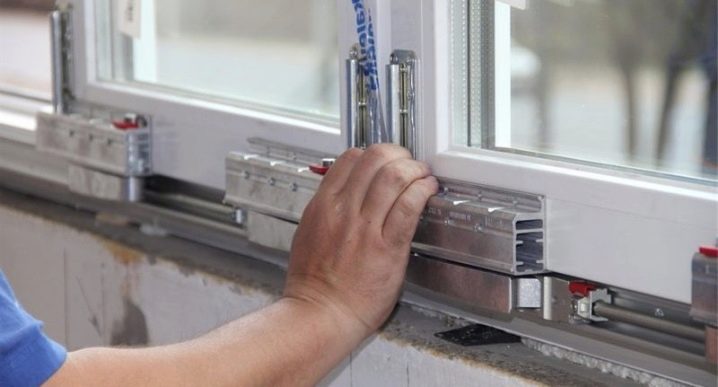
Adjusting and replacing handles
A fairly common problem: the handle is difficult to turn. If the problem is not eliminated in time, due to the excessive efforts applied, it breaks down, leaving a short stump, which you will definitely not be able to do anything.
First, how to make the handle close easily again. The locking mechanisms must first be cleaned and lubricated. First, the accumulated dust and dirt are removed, wiped dry, then all moving parts are lubricated. You need to use clean oils, free of alkalis and acids. The best option is machine oil, you can use any analog or a modern spray can.

Places for greasing a plastic window
Having lubricated all rubbing and moving parts, open / close the sash several times, turn it on its hinges. Everything should move smoothly, without jerking.
If there are problems now, most likely in the process of adjusting or changing the geometry of the window, the blocker has shifted.It should fit easily into the mating part and fit snugly against the frame. Then the handle turns easily. Move the flap and try again.
Now how to change the handle. The fasteners on which it is held are hidden under a decorative strip. If you look closely, you will see that there is a thin cap. Grab it with your fingers or pry it with your nails, pull it slightly towards you and turn it to one side. Two bolts open. They are unscrewed, the handle is removed, a new one is put in its place.
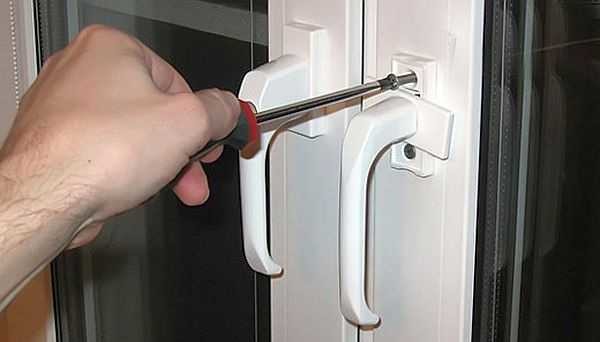
The fasteners are hidden under the decorative strip
We've covered the most common problems and how to fix them. Now, not only the adjustment of plastic windows is not a problem for you, you can make minor repairs yourself. You can also carry out service yourself (lubrication once a year).
The edge of the sash of a window or door is touching the frame
A similar problem can be encountered if the windows are often in an open state: the fastening of some parts of the fittings weakens or they themselves are deformed. Critical damage cannot occur, but the problem is solved by adjusting the position. The easiest way is to look at the manufacturer's logo on the hardware and find a detailed guide on the official website. However, there are a number of general rules:
- If the sash is skewed from the side of the handle at the bottom, it is lifted towards the upper attachment.
- If it touches the upper part, it is turned towards the lower canopy or completely lowered down.
- If it touches in the area of the handle, the sash is shifted towards the canopy.
Special hexagon-headed bolts are responsible for the adjustment. They are located on the scissors system and in the lower part of the canopy. If the balcony door is warped, everything will be somewhat more complicated - it is additionally equipped with door closers, which will have to be adjusted in parallel.
The height of the sash and the horizontal movement of the lower part are adjusted by the bolts located on the lower canopy. You can get to them by removing the platbands. The key is inserted into the part - the required bolt is hidden in its very depth. The sash rises when rotated to the right and lowers when rotated to the left.
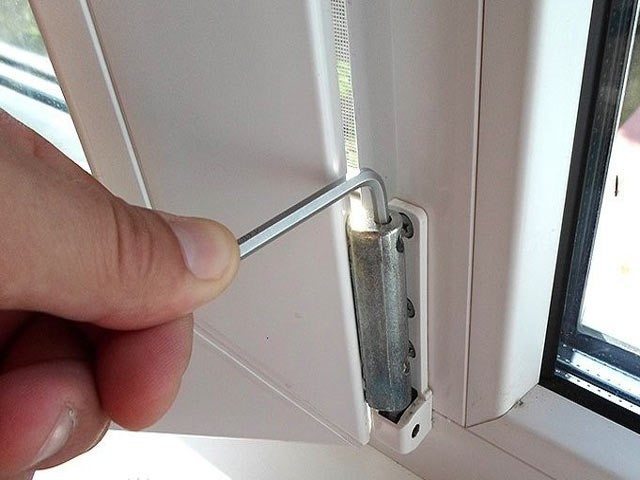 To prevent the sash from touching the frame from below, it is necessary to tighten the bolt on the lower canopy
To prevent the sash from touching the frame from below, it is necessary to tighten the bolt on the lower canopy
The tilt adjustment is similar, but a different bolt is used. The sought-after is located at the very bottom, it is located parallel to the canopy itself. Manufacturers have provided two ways to get to the desired bolt at once. From the side of the sash, it is easier to approach the bolt if the sash is fully open. Otherwise, the second option is preferable. The adjusting bolt also rotates to the right or left to move the bottom in the same direction.
Important: experts recommend monitoring the results of work more often - approximately every half-turn. This will help you not to overdo it.
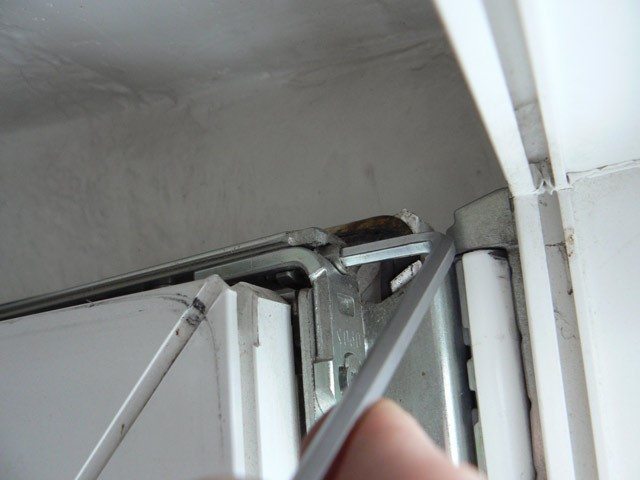 The mechanism is adjusted by turning the bolt clockwise or counterclockwise
The mechanism is adjusted by turning the bolt clockwise or counterclockwise
Finally, the top can be moved using the bolt on the scissor mechanism. You can get about it only if you open the window completely. You can find the desired hole from the side - it is slightly recessed. Further, everything is the same - turn the bolt clockwise or counterclockwise, periodically controlling the process. After that, all that remains is to put the platbands in place and assemble the tool.

